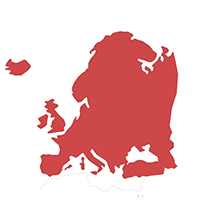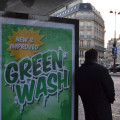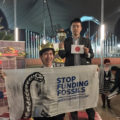European Investment Bank – A Pioneer In Climate Finance
Cécile S | November 21, 2013.
From coal-fired power plants to insulated homes, Europeans are busy greening their economies through climate-friendly finance. The Verb has compiled a top ten list with all you need to know about the European Investment Bank’s (EIB) climate financing projects.
1) In the past five years, Europe’s long-term lending institution has invested almost €80 billion in climate change mitigation and adaptation projects – mainly across Europe, but also around the world. In contrast, governments from other developed countries have only spent €35 billion in the 2010-2012 period. This leaves ‘kick-start’ climate finance and the Green Climate Fund, established two years ago, rather empty.
2) The Euro loans have favourable terms and a repayment timeframe of 25 to 30 years. This allows for long term public investment, while the EIB limits itself to 50 per cent financing of any project.
3) Since 2010, 25 per cent of funds are directed at projects with significant impact on climate change, such as those which reduce emissions or increase resilience. The main investment areas are renewable energy, energy efficiency, water, housing and sustainable transport.
4) The EIB is the world’s largest lender for renewable energy investment.
5) Examples of the bank’s climate-friendly projects include the new metro line in Warsaw, Poland; the renovation of 50 housing blocks in Vilnius, Lithuania; water sewage systems in the United Kingdom and electricity grid connections throughout Europe.
6) The criteria to obtain funding are: economical feasibility, adding value, and respecting environmental and social standards. The project also has to meet broader policy objectives of the host country, since it has to be approved by national authorities. Conversely, the World Bank has no emissions-performance standard and no goal for the share of renewable energy projects in their energy portfolio.
7) On energy, the EIB has an emissions-performance standard of 5.5 grams of CO2 per kilowatt hour power generated. This standard screens out lending to unabated coal plants, but does not discard innovative coal plants, including plants that use more efficient combinations of combustibles, those with carbon capture and storage and those with bio-mass.
8) An exception to these standard can be made if a project provides an isolated location with energy or if no alternative energy provision is available, as is the case in some developing countries.
9) The bank also plays an advisory role to develop renewable energy sources and infrastructure in developing countries.
10) The goal is to direct 90 per cent of energy lending into renewable energy. The EIB has already invested in both wind and solar power in Morocco, and more projects are on the way for North Africa. The next step is to connect the European grid with these projects in North Africa.
By Cécile Schneider, photo by Laura Owsianka.














comment